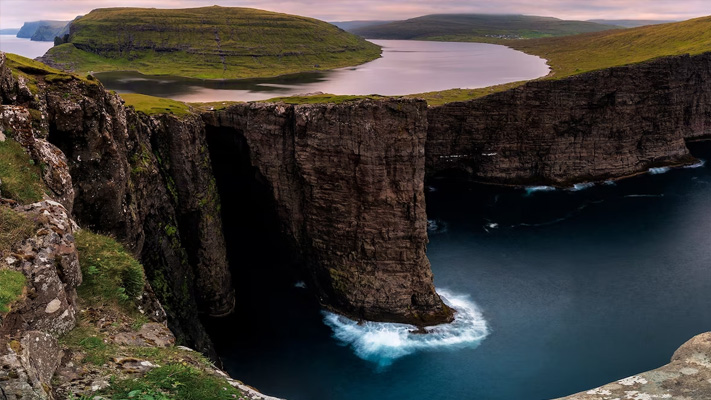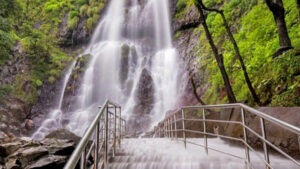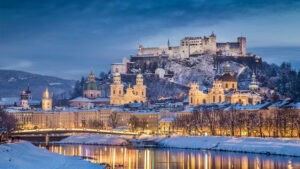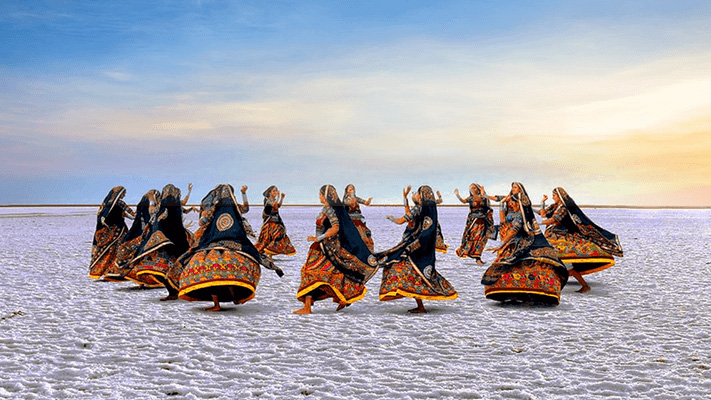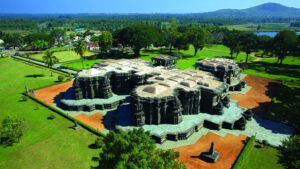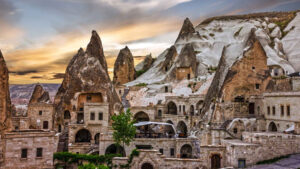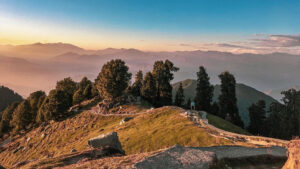FAROE ISLANDS, DENMARK – UNEXPLORED AND UNBELIEVABLY BEAUTIFUL

The Faroe Islands is a self-governing archipelago, a part of the Kingdom of Denmark, located in the North Atlantic Ocean between Iceland and Norway. The archipelago is made up of 18 islands, of which 17 are inhabited, and is known for its stunning landscapes, rugged coastlines, and unique culture.

The Faroe Islands have a population of around 52,000 people, and their economy is largely based on fishing and tourism. The islands are known for their untouched natural beauty, with dramatic cliffs, green valleys, and deep fjords. The weather in the Faroe Islands is generally cool and windy, with frequent rain and fog.
The culture of the Faroe Islands is unique, with a strong focus on traditions, music, and food. The Faroese language, a Nordic language similar to Icelandic, is the official language of the islands, and the people have a rich storytelling tradition. The islands are also home to a number of music festivals and events, including the G! Festival and the Summarfestivalurin.
Tourism is a growing industry in the Faroe Islands, with visitors coming to enjoy the stunning scenery, outdoor activities such as hiking and fishing, and the unique culture and history of the islands. The islands are also known for their delicious seafood, including salmon, cod, and langoustines, and visitors can sample traditional Faroese dishes such as ræst kjøt (dried meat) and skerpikjøt (semi-dried mutton).
Facts That Make it a Special Destination
Here are some facts that make the Faroe Islands a special destination:
1. Stunning natural beauty: The Faroe Islands are known for their untouched natural beauty, with dramatic cliffs, green valleys, and deep fjords. The islands are home to an abundance of wildlife, including seabirds, seals, and whales, and visitors can enjoy hiking, fishing, and other outdoor activities in this breathtaking landscape.
2. Unique culture: The Faroe Islands have a unique culture, with a strong focus on traditions, music, and food. The Faroese language is spoken by the majority of the population, and the islands have a rich storytelling tradition. Visitors can also sample traditional Faroese dishes, such as ræst kjøt (dried meat) and skerpikjøt (semi-dried mutton).

3. Sustainable tourism: The Faroe Islands are committed to sustainable tourism, with a focus on protecting the environment and preserving the islands’ unique culture and way of life. Visitors can enjoy eco-friendly accommodations, locally sourced food, and a range of outdoor activities that have minimal impact on the environment.
4. Unspoiled and off-the-beaten-path: The Faroe Islands are relatively unknown compared to other European destinations, which means that visitors can enjoy an unspoiled and off-the-beaten-path experience. The islands are perfect for travelers looking to escape the crowds and immerse themselves in nature and culture.
5. Home to some of the world’s most beautiful roads: The Faroe Islands are home to some of the world’s most beautiful roads, with stunning views around every bend. The islands’ network of tunnels, bridges, and causeways connects the 18 islands and offers visitors a unique way to experience the archipelago’s natural beauty.
Popular Activities Enjoyed by Tourists
Here are some popular activities enjoyed by tourists visiting the Faroe Islands:

1. Hiking: The Faroe Islands have a network of hiking trails that offer visitors the chance to explore the islands’ stunning landscapes and natural beauty. From challenging hikes to more leisurely walks, there’s a trail for every level of experience.
2. Whale watching: The waters around the Faroe Islands are home to a variety of whales, including pilot whales, orcas, and humpbacks. Visitors can take a whale watching tour to see these magnificent creatures up close.
3. Fishing: The Faroe Islands have a long tradition of fishing, and visitors can enjoy fishing trips with local guides to catch a variety of fish, including salmon, cod, and trout.
4. Bird watching: The Faroe Islands are home to a large number of seabirds, including puffins, guillemots, and gannets. Visitors can take a bird watching tour to see these birds in their natural habitat.
5. Exploring small villages and towns: The Faroe Islands are home to a number of small villages and towns, each with its own unique charm and character. Visitors can explore these communities to experience the islands’ rich culture and history.

6. Visiting museums and cultural centers: The Faroe Islands have a number of museums and cultural centers that offer visitors a deeper understanding of the islands’ history and culture. From the National Museum of the Faroe Islands to the Nordic House cultural center, there’s plenty to discover.
7. Trying traditional Faroese cuisine: The Faroe Islands are known for their unique cuisine, which includes traditional dishes such as ræst kjøt (dried meat), skerpikjøt (semi-dried mutton), and Faroese salmon. Visitors can try these dishes at local restaurants and cafes.
Top Attractions and Must See Places
Here are some top attractions and must-see places for visitors to the Faroe Islands:
1. Sørvágsvatn and the Cliffs of Trælanípa: This is a stunning location with a lake that appears to be floating above the ocean and the famous cliffs of Trælanípa.

2. Gásadalur and Múlafossur Waterfall: This is a small village situated on the edge of a cliff overlooking the Atlantic Ocean. The village is home to the stunning Múlafossur Waterfall, which drops from a height of 60 meters.
3. Tórshavn: This is the capital city of the Faroe Islands and offers a mix of modern and traditional culture. Visitors can explore the charming old town, visit museums and art galleries, and enjoy the local cuisine.
4. Vestmanna Bird Cliffs: These cliffs are home to thousands of seabirds, including puffins, guillemots, and razorbills. Visitors can take a boat tour to see the birds up close and admire the stunning views of the cliffs.
5. Mykines Island: This is a small, remote island that is home to an abundance of wildlife, including puffins, seals, and sheep. Visitors can take a ferry to the island and explore the rugged landscape, hike to the lighthouse, and enjoy the peaceful atmosphere.
6. Kirkjubøur: This is a historic village that is home to the ruins of the Magnus Cathedral, which dates back to the 14th century. Visitors can also explore the Kirkjubøargarður farmhouse, which has been in the same family for 17 generations.
7. Gjógv: This is a picturesque village located on the island of Eysturoy. Visitors can explore the charming harbor, hike to the nearby cliffs, and enjoy the peaceful surroundings.
8. Funningur: This is a scenic village located on the island of Eysturoy. Visitors can enjoy hiking and exploring the beautiful landscape, as well as visiting the historic church and traditional Faroese houses.
Best Time to Visit

The best time to visit the Faroe Islands is during the summer months from June to August when the weather is milder and the days are longer. During this time, visitors can enjoy hiking, boat tours, and other outdoor activities in the beautiful scenery. However, it is important to note that the Faroe Islands have a temperate maritime climate, which means that weather conditions can change quickly and rain is common throughout the year. Therefore, it is recommended to bring warm, waterproof clothing and be prepared for all types of weather.


